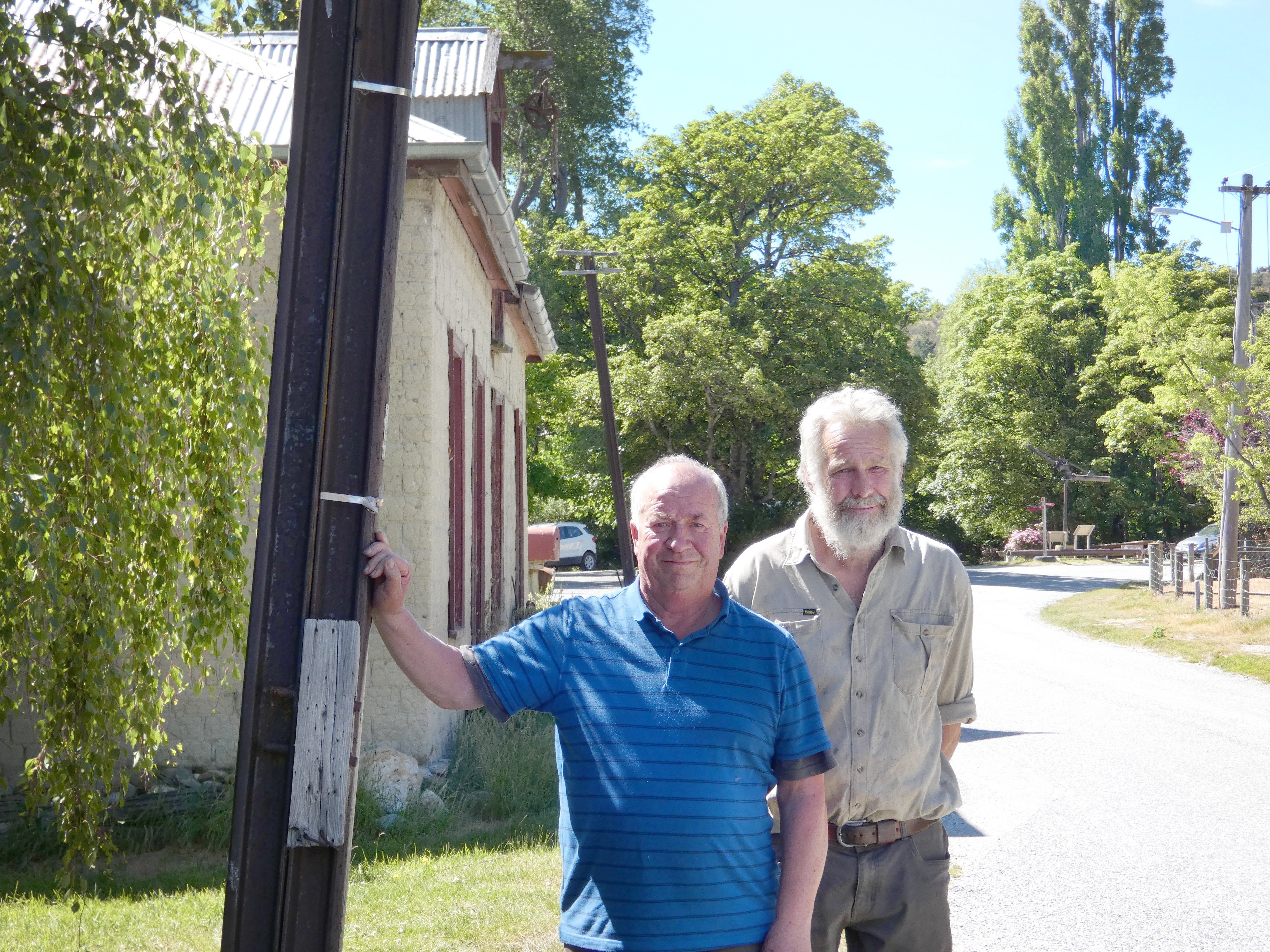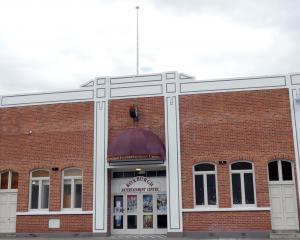
St Bathans' gold rush-era telegraph poles have been saved from removal thanks to community intervention.
Negotiations between the St Bathans Area Community Association, Central Otago Mayor Tim Cadogan, Vincent Community Board chairman Martin McPherson with Chorus means the poles, which pre-date the first known photograph of them from 1889, will remain in situ.
Mr McPherson said there were "a few i’s to be dotted and t’s to be crossed" before ownership of the poles was vested to council but essentially it was a done deal.
The deal, struck earlier this month, has been 22 years in the making.
In all it means 17 poles — constructed from railway irons with timber crossbars and an additional seven poles made from hardwood and of a similar age — will stay put.
The wires are long gone.
The back story involves crossed wires and miscommunication — the polar opposite of what the telegraph poles were designed for.

This followed lobbying by his late wife Sharon to keep the poles in place as an important part of St Bathans’ history and an integral part of the historic streetscape.
"Telecom came out and agreed to do us a favour."
When the proposal to gift the poles went to the community board the deal somehow was never finalised.
A report presented to the board dated August 24, 1998 recommended it take responsibility for the poles which were surplus to Telecom’s requirements.
What happened next is lost in time.
St Bathans Area Community Association treasurer Euan Johnstone said it was thought the poles were already owned locally as a "community asset".
Six months ago it transpired the deal had never happened, when Chorus announced it was going to remove the poles.
The association then worked with the Vincent Community Board to investigate what could be done to save them.
"Because the poles were on roading reserve it had to be a full council investigation."
That included checking the poles for structural integrity.
Cue Mr Cadogan and Mr McPherson who "showed genuine interest", Mr Johnstone said.
Central Otago District Council roading manager James McCallum was the next player to enter into the fray and soon after contractors checked the condition and the depth of the poles.
"They said we’ll get back to you."
An answer came from Chorus community relations manager Jo Seddon.
"She said they are stable and we’ll [Chorus will] put some money towards this," Mr Hinds said.
Ms Seddon confirmed that yesterday and said Chorus had agreed to vest all 24 poles — railway iron and wooden — to the council, and make a contribution to the remediation of some of the poles.
"We are really pleased that a solution was found that benefited the St Bathans community."
The origins of the poles are mysterious.
"They were possibly ballast used in ships," Mr Hinds said.
Maker’s marks on the railway irons back up this theory.
He believed it was the longest telegraph line to run through a populated area in Australasia.
Historical photos also show the poles were at some point moved from one side of St Bathans Loop Rd to the other.
A bit of work to stabilise the footing of some poles and the deal will be done, Mr Hinds said.
The poles will stay put - leans and all.












